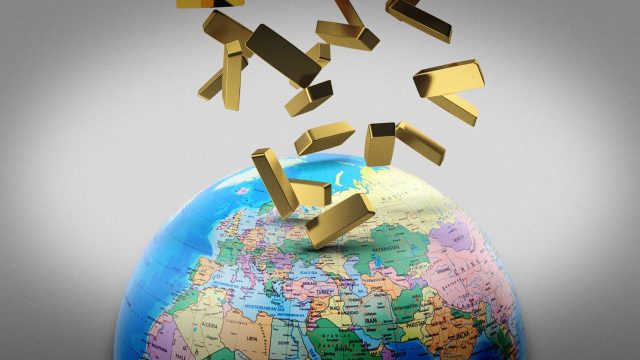
“Buy when there’s blood in the streets, even if the blood is your own,” was the maxim of 19th-century banker Nathan Rothschild. But for investors who don’t share his appetite for risk, gold has always been considered the ultimate safe haven.
This appears to be more true today than ever as the price of the precious metal has soared 50% this year, far outpacing returns from equities. In October, the gold value hit $4,380 an ounce, an all-time record.
The rally has been largely driven by uncertainty – “whether that is geopolitical, economic or now there is the interest rate cycle entering people’s minds”, Ryan McIntyre, from investment management firm Sprott, told The New York Times.
What is driving the gold rush?
Each theory behind gold’s soaring price “rests on a different buyer: institutional investors, central banks and speculators”, said The Economist.
Institutions are attracted to gold as a store of value in times of crisis. Previous surges took place after the dotcom crash of the early 2000s, the financial crisis at the end of the decade, and during the Covid pandemic. This time round it is Donald Trump’s tariff war and fears of an imminent AI-stock crash that is driving investors to seek safety in gold.
Central banks, too, have increasingly sought protection “not against short-term meltdowns but longer-run changes”. According to the International Monetary Fund, central bank holdings of physical gold in emerging markets have risen 161% since 2006, with purchases going into overdrive in the wake of Russia’s invasion of Ukraine. Both China and Russia have ramped up switching their official reserve assets out of currencies such as the US dollar and into gold.
Finally, there is the recent US government shutdown. The prolonged stand-off increased “long” positions held by hedge funds on gold futures, meaning that speculators are “the most likely drivers of recent price movements”.
What does it say about the economy?
Citadel hedge fund founder and CEO Ken Griffin recently said the rising price of gold is an indication of something big. “That something is a loss of trust,” said The Telegraph. “A loss of trust first and foremost in US treasuries, but also in other G7 government bond markets, including the UK.”
Stress in the long-term bond markets combined with a devaluation of the US dollar, which suffered its biggest decline in more than half a century this year, “have unsettled alternative assets typically viewed as low-risk investments”, said ABC News.
“There’s no way you can interpret these exploding gold prices as a good sign – they’re a warning sign,” said Paolo Pasquariello, professor of finance at the University of Michigan. “There’s clearly a case to be made that these high gold prices are a leading indicator of troublesome times ahead for the US economy.”
Will it end?
October’s sudden price decline, when gold dropped 10% before recovering, was “driven by a confluence of factors” that may prove a useful predictor of what might curb the rally, said Bloomberg.
A successful resolution of trade tensions between the US and China “could stop gold from resuming its record-breaking rally – as could a broader de-escalation of US tariffs”. A “continued dollar rally, a resolution to the legal proceedings against Fed Governor Lisa Cook, and a peace deal between Russia and Ukraine” could also take the shine off gold’s appeal to investors.
Institutions, central banks and speculators drive record surge amid ‘loss of trust’ in bond markets and US dollar





